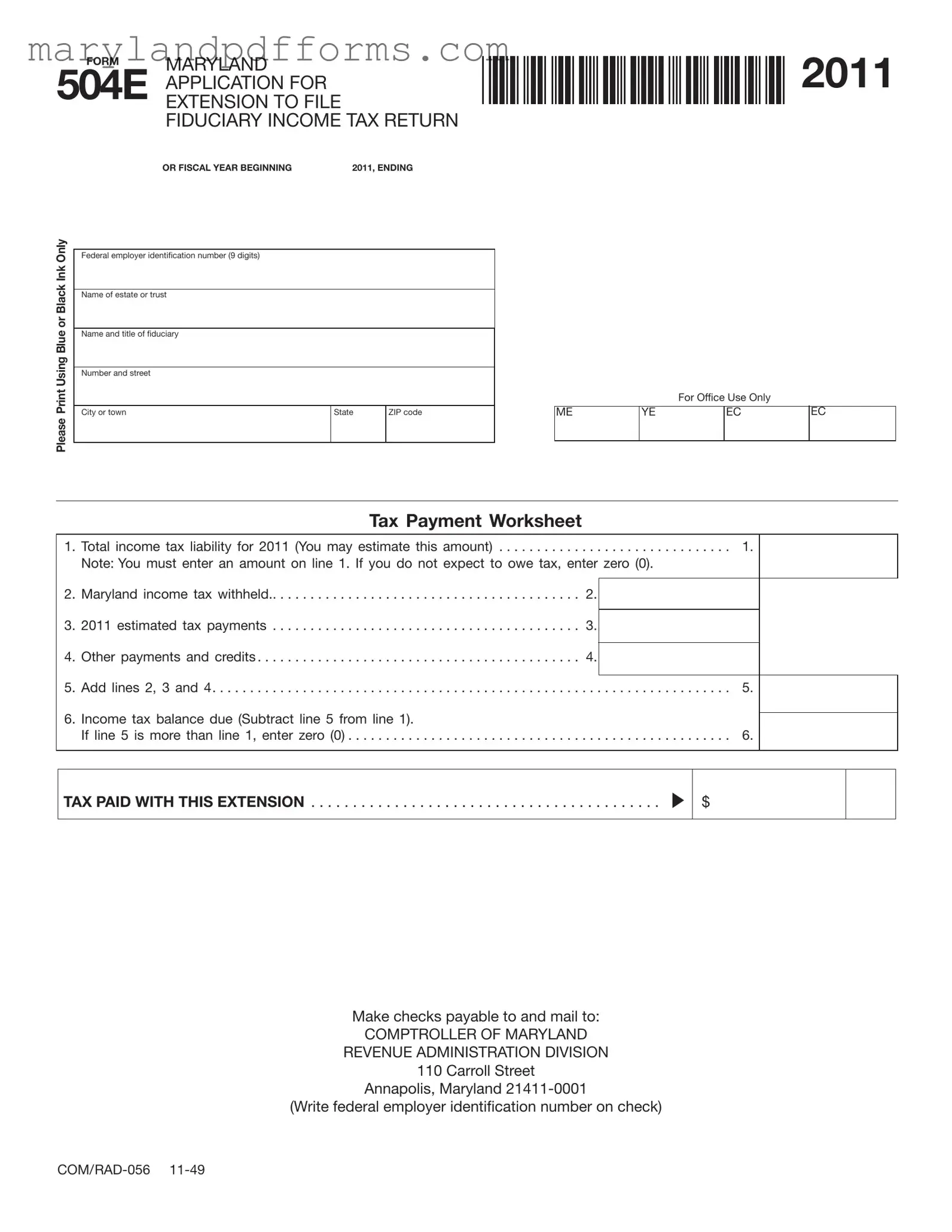The Maryland 504E form is an application for an automatic six-month extension to file the fiduciary income tax return, specifically Form 504. This form is essential for fiduciaries managing estates or trusts that require additional time to prepare their tax returns.
Any fiduciary responsible for filing a fiduciary income tax return in Maryland may need to file Form 504E. This includes individuals managing estates or trusts who require an extension beyond the standard filing deadline.
Form 504E must be filed by April 15 of the year following the tax year in question. For fiscal year filers, the form should be submitted by the regular due date of their return. It’s crucial to meet this deadline to ensure the extension is granted.
When completing Form 504E, you will need to provide:
-
Your federal employer identification number.
-
The name of the estate or trust.
-
The name and title of the fiduciary.
-
Your address, including city, state, and ZIP code.
-
Your estimated total income tax liability for the year.
-
Any Maryland income tax withheld, estimated tax payments, and other payments or credits.
If you miss the deadline to file Form 504E, you will not receive the automatic extension. This could result in penalties and interest on any unpaid taxes. It’s important to file on time to avoid these additional costs.
No, filing Form 504E only extends the time to file your return. It does not extend the time to pay any taxes owed. If you do not pay the amount due by the original deadline, you will incur interest and potential penalties.
What if I need more than a six-month extension?
Generally, extensions longer than six months are not granted. However, if you are a fiduciary who is out of the United States, you may request a longer extension by providing a reason on your application. Keep in mind that no extension can exceed one year from the original due date.
When you file your fiduciary income tax return (Form 504), you should report any payment made with Form 504E on line 31 of your return. This ensures that the payment is properly credited to your account.
Mail Form 504E to the Maryland Revenue Administration Division at the following address: 110 Carroll Street, Annapolis, MD 21411-0001. Make sure to include your federal employer identification number on any checks you send with the form.
